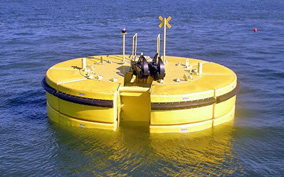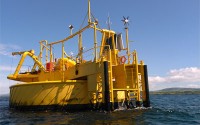What is a Conventional Buoy Mooring?
Conventional Buoy Moorings
Buoys are often associated with systems designed to take real-time measurements of the ocean or to warn ships of reefs and other dangerous items. Buoys can also be used to help divers mark their position while underwater, to provide guidance for ships entering into a port and even to detect tsunamis while they are still far out at sea. However, another very useful benefit is associated with what is known as a conventional buoy mooring configuration. How does this system operate, what are its main features and what advantages does such a solution have to offer? It is wise to take a look at these points in greater detail.
An Overview of a Conventional Buoy Mooring System
This type of design is frequently referred to as simply “CBM”. Between three and six individual buoys are arranged into a rectangular configuration. These are then permanently attached to the sea floor with the use of tethers. Depending upon the depth of the sea, these tethers can be quite long. They are also made of an extremely durable material with a high tensile strength. Otherwise, the tethers may snap during stormy conditions. The entire group of tethers and their attachment points is known as a sub-sea control system.

The Purpose of a Conventional Buoy Mooring System
The primary intention of a CBM system is to provide ships with a safe anchorage point when they are out at sea. One notable advantage is that a conventional buoy mooring system can be used when there are no nearby quay sites for a ship to dock or remain firmly in place. Instead, the buoys will be attached to designated mooring points on the ship. The reason that they are arranged into a rectangular configuration is to provide the ship with bilateral stability while it is moored in place. Then, various tasks can be carried out safely. Some of these include (but are not necessarily limited to):
- Loading cargo onto a large freighter.
- Offloading goods such as oil, fluids or similar bulk products.
- Transferring fluids from one ship to another.
- Refuelling the vessel without having to dock in port.
CBM systems are especially useful for ships that have a very large footprint, as they may not be able to safely enter into certain ports (such as a large oil tanker, for instance).
In Synergy with Fluid Transfer Systems
As mentioned in the last section, a CBM platform can be used in conjunction with fluid transfer systems. These systems generally consist of flexible sub-sea pipelines which can be directly attached to the ship. Then, bulk fluids are able to transferred directly to the shore. When the hoses are not in use, they are simply stored on the seabed until they are needed once again. The only difference occurs when cryogenic fluids intend to be transferred. In this case, a hose will be affixed above the water to the midship manifold.
Construction
Conventional buoy mooring systems can either be made to order or can be purchased as off-the-shelf units. There can also be times when site-specific mechanisms such as rapid-disconnection couplings are included within the plan. However, we should also note here that the arrangement of the buoys as well as the undersea mooring points are always designed with the discrete needs of the site in question. Variables including the gradient of the seabed, the depth of the water and local environmental conditions are always taken into account. This will help to ensure that the most safe designs are incorporated before the unit is affixed into its permanent place. In the majority of applications, conventional buoy mooring systems are used in water depths of at least six metres.
This is a general overview of a conventional buoy mooring system. Of course, the exact configuration and dimensions will vary depending upon the size of the ships as well as the geographic location. Offering a stable and yet flexible platform to offload goods and fluids, the typical CBM has become an invaluable addition to modern maritime transport. We should expect these unique solutions to continue to advance as the needs of the shipping industry expand well into the foreseeable future.
